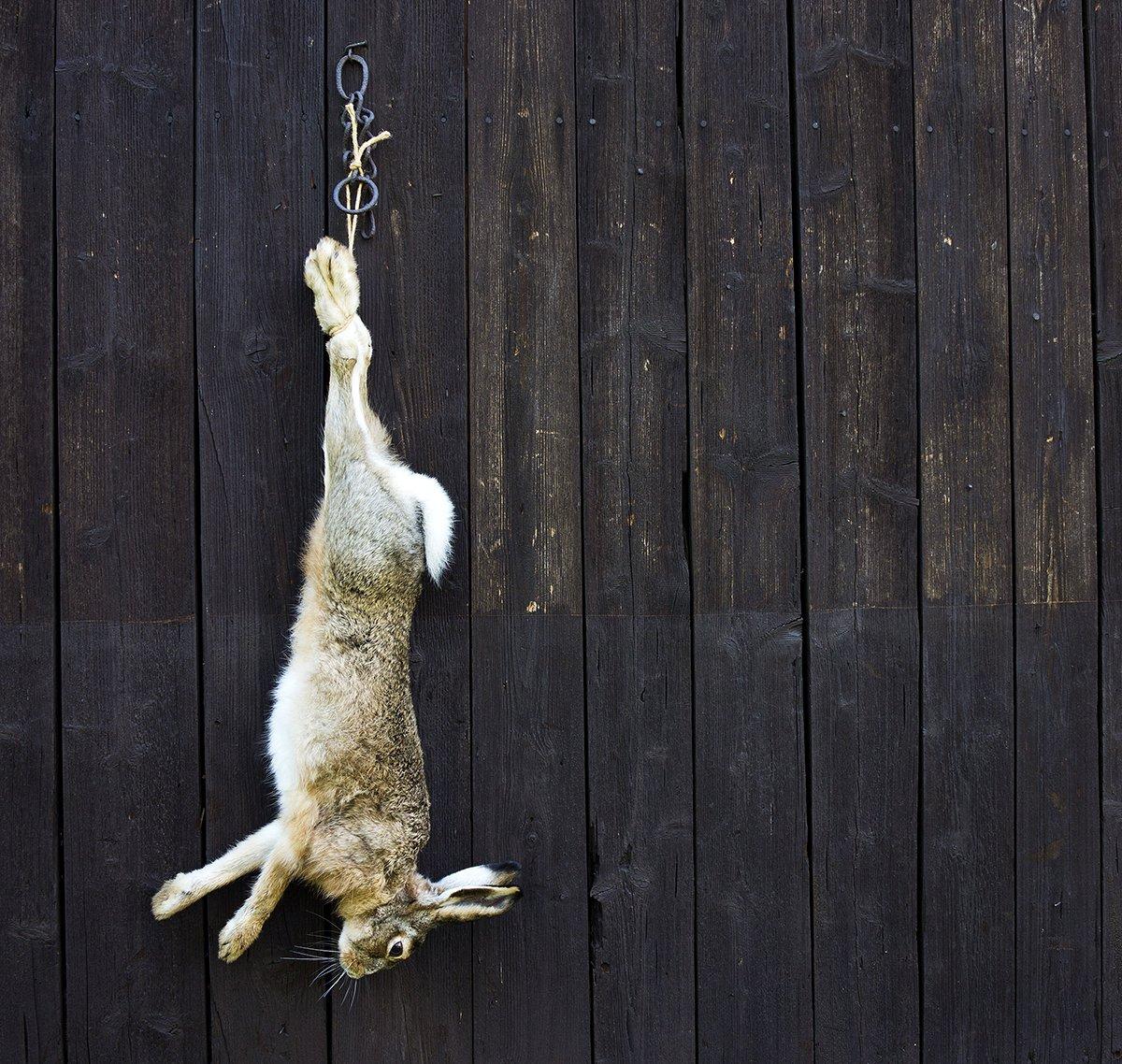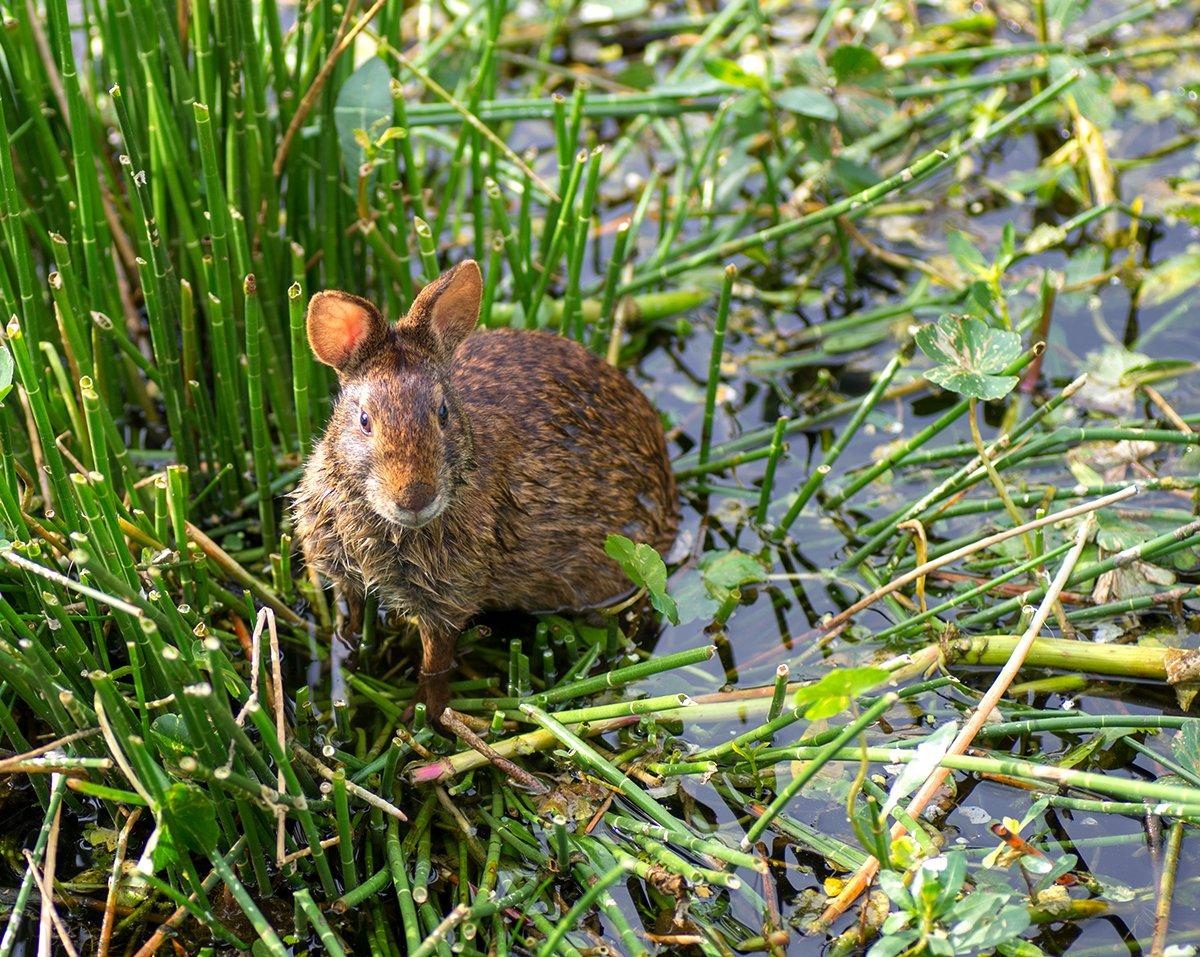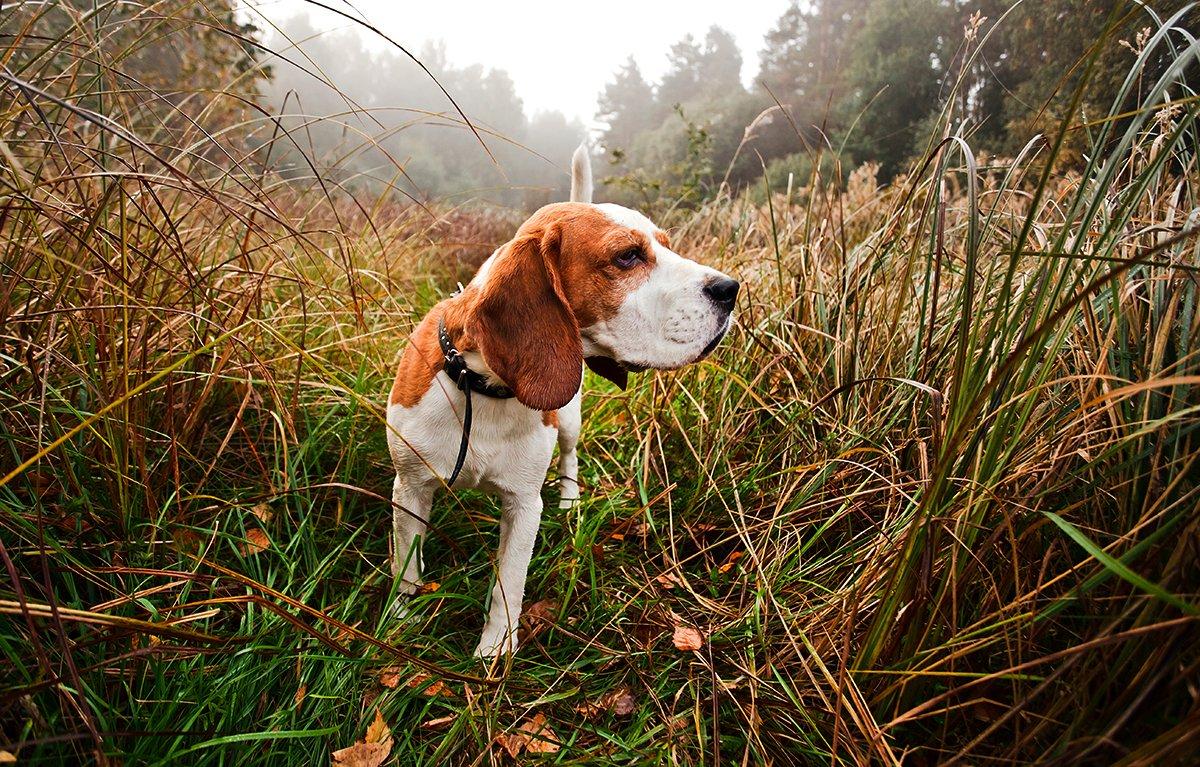Swamp rabbits are twice the size of cottontails and notoriously difficult — and fun — to hunt
"Hunting swamp rabbits is the most challenging small-game hunting there is. Hunting cottontails is kid stuff compared to this.
My longtime hunting companion, Jim Spencer, of Calico Rock, Arkansas, uttered those words during a hunt in the eastern Arkansas river bottoms. We had just seen one of the big swamp rabbits do some pretty amazing stuff, which prompted the retired Arkansas Game and Fish Commission biologist, an avid small-game hunter, to say, It never ceases to amaze me the things these giant rabbits will do to elude the dogs and hunters. They're extremely fast and amazingly smart.
We had released our dogs in a hardwood swamp an hour earlier. Within seconds, they hit a hot trail and raced away, creating quite a hullabaloo. Jim and I climbed up on stumps so we could see better through the flooded timber edging the L'Anguille River. If the swamp rabbit circled back as we expected, we'd have a better chance of getting a shot.
A half-hour passed as we listened to the chase go almost out of earshot. Then, finally, the chorus grew stronger as the beagles turned the swamp rabbit and started back.
Get ready now, Spencer said. They'll run a long way ahead of the dogs.
He was right. When the bawling pack of beagles was still several hundred yards away, the big swamp rabbit appeared, hopping nonchalantly through the undergrowth.
There it is, I shouted, trying to get a bead on the creature. But before I could shoot, we watched the huge rabbit — twice the size of a cottontail — slide into the icy river and dive beneath the surface like a muskrat. It reappeared downstream, but only its eyes, ears and nose were visible.
That son-of-a-gun's not playing fair, Spencer said. The dogs will have a hard time picking up its trail.
Right again. When the dogs arrived 10 minutes later, still bawling loudly, the swamper seemed to have disappeared. The beagles were undeterred, though, and soon the strike dog, Bear, yelped as if zapped by a cattle prod. He had seen the rabbit — its nose, at least — in the middle of a brushy treetop half-submerged at the water's edge. Bear leaped toward it, followed by his littermate, Reb. Then again, the chase was on. The three animals crossed the slough and bailed out. The swamp rabbit ran like demons from hell were on its tail.
You'd think they have webbed feet the way they swim, Spencer said. They're twice as big as cottontails, averaging 5 to 6 pounds. I've heard of Louisiana canecutters weighing over 11.
Spencer, now 76, grew up in the White River bottoms near Stuttgart, Arkansas, and was hunting swamp rabbits, or canecutters as they're known in the South, at an early age. A lifetime of hunting offers extra insights into the rabbits' behavior.
(Don't Miss: 5 Ways to Ruin a Squirrel Dog)
Rabbits of the Wetlands
Swamp rabbits are wetland animals, Spencer said. They frequent thick cover like cottontails, but need places like marshes and wooded river bottoms to thrive. Unfortunately, the vast wetlands of our early days are largely gone now, and we've seen a corresponding decline in overall numbers of swamp rabbits. That's a big-picture viewpoint, however, and on a case-by-case basis, there's no reason they shouldn't be hunted where suitable habitat exists. Legal hunting doesn't threaten swamp rabbits any more than it threatens cottontails or mourning doves.
Fortunately, most landowners today realize the importance of wetlands and protect these areas. Some of my best hunting is in river bottoms on farms in eastern Arkansas. The landowners maintain these areas for duck hunting, but canecutters thrive in this habitat as well.
The species ranges from southwestern Indiana, southern Illinois, southern Missouri and southeastern Kansas, as well as south through eastern Oklahoma, eastern Texas, Arkansas, Louisiana, Mississippi, Alabama, Georgia and western South Carolina. In other areas, it goes by different names. Canecutter is common because of the rabbits' fondness for young cane shoots. Other monikers include cane jake, swamp hare, water rabbit or simply swamper. Some people call swamp rabbits bucks because they think they're big buck cottontails.
Canecutters need a lot more killing than cottontails, Spencer says.
Young swamp rabbits closely resemble their cottontail cousins. Soon, though, they develop characteristics that enable separating the two species. The ears in proportion to the body are shorter on swamp rabbits. The tail is smaller and almost lacking the cottontail's distinct white powder puff. In coloration, the swamp rabbit is darker in appearance overall, and if you were to compare the hind feet of these two bunnies, you'd find those of the cottontail to be almost white, but swampers have feet with a reddish-brown hue.
Cottontails prefer dry upland habitat. Swamp rabbits, conversely, inhabit half-flooded timberlands and swamp thickets where hunters need webbed feet to have a sporting chance. Canebrakes, elderberry thickets, and dense stands of honeysuckle and catbriers in stream floodplains provide ideal cover, with hunting opportunities available in bottomland locales throughout the south-central states.
Swamp rabbits also prefer elevated seats that allow them to keep their feet and rear ends dry. They typically rest on logs or stumps, where they leave fresh rabbit pellets that provide hunters a clue to their whereabouts. If their homeland floods, they will often climb trees and sit in forks until the water recedes. If a tree isn't handy, a floating log will serve the same purpose.
(Don't Miss: 20 Years Later, the .17 HMR is the Best Rimfire Round Made for Hunting)
Hunting Tips
Dogs are a decided advantage in any type of rabbit hunting. But because of the heavy cover and wet terrain, Spencer said dogs will make you or break you on a swamp rabbit hunt.
You won't get many shots walking them up, he said. Swampers rarely inhabit narrow cover strips that lend themselves to brush kicking. Instead, they'll sit on a floating log or in a clump of grass that looks just like a thousand other potential hideouts. You can wander in their soggy kingdom all day and never kick one up. Well-trained beagles are a necessity.
It's important that hunters learn to interpret the course of the rabbit by the sounds of the chase. Cottontails and swampers exhibit distinct running patterns that will help you prepare for a shot.
Cottontails usually make a fairly short circle, and you'll hear the baying dogs clearly throughout their pursuit. You position yourself close to where the rabbit started, and when the yelping beagles draw near, you prepare to shoot. Mr. Cottontail will usually be just ahead of them.
A swamp rabbit chase is vastly different, but equally, if not more, exciting.
When the dogs jump him, ol' Canecutter takes off in high gear, pouring on the coals until he has established a substantial lead over the slow ground-sniffing pack of beagles, Spencer said. Like cottontails, he'll return to the point where first jumped, but not until he's taken the hounds completely — or at least nearly — out of earshot. When the dogs begin to turn back, even though they may still be quite distant, that's when you better be on your toes, because the swamper will be far out in front of the beagles. If you and your hunting buddy are chewing the fat instead of scrutinizing your surroundings, the swamper will slip by undetected, and the dogs will have to make another complete circle before you're presented a shot. Being ready long before the dogs draw near is the hardest thing most novice canecutter hunters must learn.
(Don't Miss: 25 Tips for Dove Hunters)
Gearing Up
The light guns and loads used for cottontails are out of place when hunting swamp rabbits.
Canecutters need a lot more killing than cottontails, Spencer said. And the cover you shoot through is usually a lot more substantial. A 12-gauge is best, and hunters should gear up to standard loads or short magnums with 4, 5 or 6 shot.
It's easy to think you might have missed a swamp rabbit because, even when hit with heavy-load No. 4 shot, these super-bunnies often keep running for several yards before they expire.
If your dogs stop running and yelping a short distance from the spot where you fired on the rabbit, chances are they've found a dead swamper, so move in and check it out, Spencer said.
Proper clothing is a must as well. A good pair of rubber boots and brush-buster pants are indispensable in bottomland hunting territory, and for safety's sake, everyone in your hunting party should wear a hunter-orange hat or clothing. Always clearly identify your target before shooting, and keep in constant contact with your hunting buddies by whistling or shouting every couple of minutes. There's simply no room for mistakes when hunting swampers in the dense lowland thickets they call home.
This is tough hunting, Spencer said as we finished our hunt with one swamp rabbit apiece in our game bags. We put our feet 1,000 times in places the human foot wasn't designed to go and fight through thickets that appear impassable, all for the fleeting chance of getting a snap shot at a brown blur that can't decide if it wants to be terrestrial or aquatic. It's a sport demanding the strategies of a war general, the shooting skills of a grouse hunter, the lungs and legs of a long-distance runner, the dog-handling abilities of a professional trainer and the patience of Job. It's a labor of love, though, and addicts like me don't want it any other way.
Amen to that.
(Don't Miss: 25 Hillbilly Squirrel Hunting Tips)










